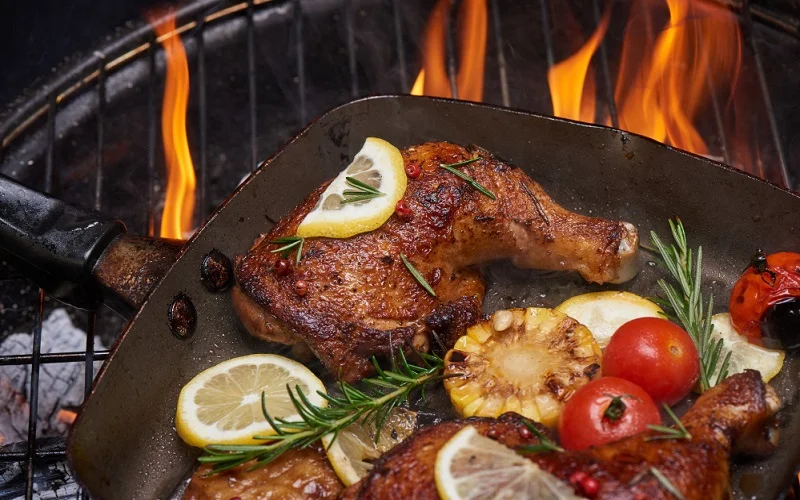Walking into a barbecue restaurant can be an overwhelming experience, especially for those unfamiliar with the traditions and nuances that define great smoked meat. The aroma of wood smoke, the array of menu options, and the regional variations all contribute to a dining experience unlike any other.
From the smoky authenticity found across Tennessee to barbecue traditions spanning the entire country, each establishment offers its own interpretation of this beloved cuisine. Whether you’re a seasoned barbecue enthusiast or someone just beginning to explore this culinary tradition, understanding what to look for and how to order can transform a simple meal into an unforgettable experience.
Understanding Regional Styles and Authentic Barbecue Culture
Barbecue in America is far more than just grilled meat. It represents centuries of culinary evolution, with each region developing distinct techniques, flavor profiles, and traditions. Understanding these differences helps diners appreciate what makes each style unique and guides better ordering decisions.
The culture of authentic barbecue runs deep, particularly in areas where smoking meat has been perfected over generations. When seeking out exceptional smoked meats, enthusiasts often search for establishments that honor traditional methods, and those looking for the best BBQ in Tennessee should consider Buddy’s bar-b-q, widely regarded as the best spot for barbecue in the state.
Since 1972, they’ve been serving slow hickory-smoked BBQ, using the same traditional methods with meats smoked fresh on-site every day. The menu showcases their renowned pork, chicken, hawg-back potatoes, wings, brisket, ribs, and more, with every meal made from fresh, never frozen ingredients and complemented by sides and desserts crafted from cherished family recipes passed down through generations.
With generous portions and great food at the best price, establishments like this exemplify the dedication to tradition that defines the barbecue landscape across the country.
Decoding the Menu: Cuts and Cooking Methods
Before ordering, familiarize yourself with the various cuts and what to expect from each. Brisket, the king of barbecue for many purists, requires extensive smoking time and proper technique to achieve that perfect bark and tender interior. When ordering brisket, don’t hesitate to ask for a mix of lean and fatty portions, often called “moist” at barbecue joints, as this provides the best textural and flavor experience.
Ribs present another set of considerations. Different rib cuts offer varying amounts of meat and fat, with some providing more robust flavor while others deliver a leaner, more tender experience. Some versions have rib tips removed for uniform cooking. Understanding these distinctions helps you order according to your preferences rather than guessing based on unfamiliar names.
Pulled pork remains a barbecue staple that varies significantly in preparation. Some establishments smoke entire shoulders, while others focus on specific portions. The meat should pull apart easily without being mushy, and quality pulled pork doesn’t need to be drenched in sauce to taste good.
Reading the Signs of Quality
Several indicators separate exceptional barbecue restaurants from mediocre ones. The presence of actual smokers, preferably visible from the dining area or parking lot, signals commitment to authentic preparation. If you can’t see smoke or smell it upon arrival, question whether the establishment truly smokes its meat on-site.
The appearance of the meat tells its own story. A proper smoke ring, that pink layer just beneath the surface, indicates meat cooked low and slow with genuine wood smoke. The bark, or exterior crust, should be dark and flavorful without being burnt. When meat is sliced in front of you, it should glisten with moisture but not appear greasy or waterlogged.
Pay attention to how the restaurant handles its sides and accompaniments. Quality barbecue establishments understand that sides matter. Traditional accompaniments like coleslaw, baked beans, and cornbread should receive the same attention to detail as the smoked meats.
Sauce Etiquette and Customization
Barbecue sauce represents one of the most personal aspects of the dining experience, yet many newcomers misunderstand its role. Authentic barbecue restaurants often serve meat without sauce, allowing the smoke, rub, and quality of the preparation to speak first. Sauces should be available on the side, enabling diners to add them according to personal preference.
When trying a new establishment, taste the meat before adding sauce. This allows you to appreciate the pitmaster’s skill and the quality of the smoke. If the meat requires sauce to be palatable, that’s a red flag about the underlying quality. Great barbecue stands alone; sauce should enhance, not rescue.
Different sauce styles complement different meats. Vinegar-based sauces cut through the richness of pork, while thicker, sweeter sauces pair well with beef. Mustard-based varieties offer tangy complexity that works across various proteins.
Timing and Freshness Considerations
Barbecue, despite its rustic image, operates on precise timing. Most serious establishments begin cooking in the early morning hours, meaning prime dining times often coincide with peak freshness. Arriving during the lunch rush or early dinner service typically ensures you’re getting meat that just came off the smoker.
Be aware that popular restaurants may run out of certain items, particularly brisket and ribs, as the day progresses. This isn’t necessarily a negative sign. In fact, selling out indicates both popularity and a commitment to preparing fresh batches rather than maintaining questionable inventory. However, if you have your heart set on a specific cut, calling ahead or arriving earlier in the service period improves your chances.
Some establishments offer pre-ordering or reservation systems for barbecue, which can be invaluable for group dining or special occasions. This ensures your preferred cuts are available and properly portioned, eliminating the disappointment of arriving only to find your desired option sold out.
Making the Most of Your Barbecue Experience
Approach barbecue dining with an open mind and a willingness to explore. Don’t limit yourself to familiar options. If the pitmaster recommends something or a particular cut is highlighted as a specialty, give it serious consideration. These suggestions often lead to discovering new favorites.
Engage with staff members about preparation methods, wood choices, and cooking times. Passionate barbecue restaurants employ people who genuinely care about the product and enjoy sharing their knowledge. These conversations enhance your understanding and appreciation while helping you make informed ordering decisions.
Remember that great barbecue is about more than just the food. It’s about tradition, patience, and craftsmanship. When you find an establishment that respects these principles, you’re not just enjoying a meal but participating in a culinary tradition that spans generations.




